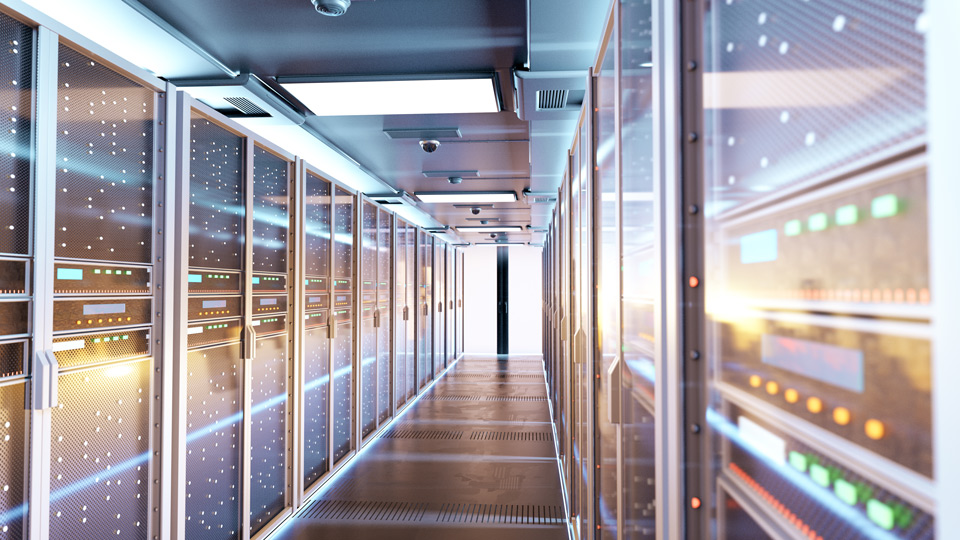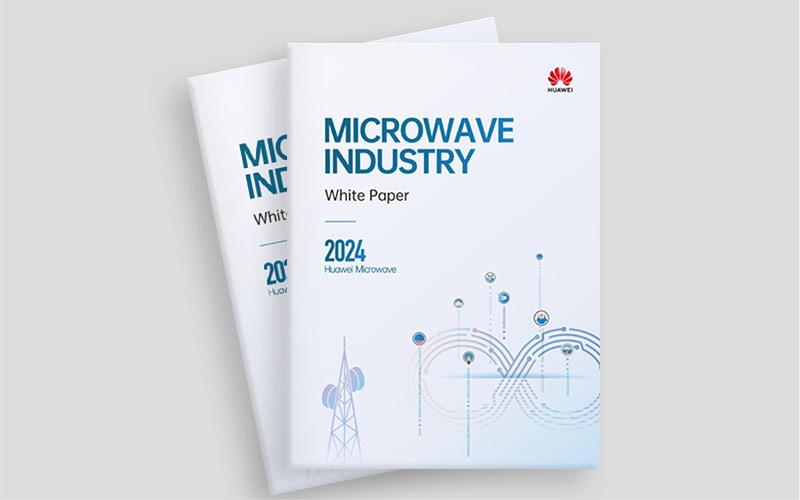Industry Trends
Eight Technologies Leading Us into the Intelligent World
Digital and intelligent transformation is driving us towards an intelligent world. How will the ICT industry develop to fuel this journey?


By Dang Wenshuan, Chief Strategy Architect, Huawei

To bring our vision for the intelligent world to life, the ICT industry needs to continuously explore new ways to improve and innovate. Two pillars underpin our vision of accelerating the intelligent world: "ICT for Intelligence" and "Intelligence for ICT".
- "ICT for Intelligence" is about constantly innovating and evolving in different ICT domains to improve key capabilities.
- "Intelligence for ICT" is about how the ICT industry will become more intelligent and achieve architectural innovations to deal with complex O&M, deliver a positive user experience in a wider range of applications, and enable green development.
Based on these two pillars, this articles looks at our development approaches to eight key ICT areas: wireless networks, cloud core networks, all-optical networks, data communication, autonomous driving networks, computing, data storage, and cloud computing.
Wireless Networks: Striding towards 5.5G and Intelligent IoE
5G has greatly improved mobile user experiences. In the 4G era, SD videos were mainstream, but in today's 5G world, 60% of videos are already HD. Many new types of mobile interactions, such as short videos, live-streaming e-commerce, and virtual concerts with tens of millions of viewers, are emerging and gaining in popularity. Cost per bit has dropped sharply and new consumer behaviors have formed. These new behaviors have driven a surge in mobile traffic, redefined standards for user experiences, and changed the rules of the game.
As services like XR and new calling mature, we predict that by 2025 average mobile data traffic per user per month (DOU) will increase from 15 GB to 100 GB, while data rates will increase from 1 Gbit/s to 10 Gbit/s.
To prepare for these changes, the mobile industry should focus on four key areas.
First, we must free up more spectrum across different bands for 5G to build a universal mobile broadband network.
Second, we need to begin deploying millimeter wave and 6 GHz around 2024 or 2025 to support these spikes in data traffic.
Third, we must introduce AI into wireless networks to make them more autonomous and intelligent.
Finally, we need to define and shape the development of 5.5G.
Our goals are to improve the basic performance of 5G wireless network tenfold, achieve AI native and 10-Gbit/s mobile experiences, and support 100 billion IoT connections.
Developments in spectrum resources are paramount. Currently, there are only a few hundred MHz available for most operators, including new mid-band TDD spectrum and existing FDD spectrum. This can reliably support X Gbit/s and 15 GB DOU. However, from 2025 onwards, telecom operators will each need at least 1 GHz of spectrum to deliver a 10-Gbit/s experience and support over 100 GB DOU. Making the most of the sub-100 GHz section of the spectrum is the key to achieving this.
That is why we have proposed IntelligentRAN. It has two parts: Intelligent base stations and the intelligent management platform iMaster MAE. With this new architecture, we can create digital twins of wireless networks through data reconstruction, use layered AI engines to support diversified AI application scenarios, and enable layered autonomy for network elements and the management platform through multi-target management and intelligent decision-making.
The idea behind this is to build AI-native wireless networks with zero-wait provisioning, optimal experience and energy efficiency, zero faults, and continuous learning and evolution.
The goal of IntelligentRAN is to achieve autonomy in the wireless network domain.
The industry recognizes 5.5G as the way forward. But, to take it to the next level, we must jointly develop standards and clarify the development direction of key technologies such as ultra-large bandwidth, uplink spectrum reconstruction, passive IoT, green air interface, and AI native.
Cloud Core Networks: Creating Better Business Value with Full Service Enabling
VoLTE and VoNR have emerged as the basis of 5G voice networks due to the high-quality voice experiences they deliver and the reduced use of spectrum for 2G and 3G. Operators have also started developing video calling services, which we expect to take off in the near future and achieve a penetration rate of more than 15% by 2025.
To support a richer user experience, core networks must undergo three changes. First, they need to support full-service enablement. Second, they should adopt AI to make core networks autonomous and intelligent. Third, the industry must come together and define and shape the development of 5.5G core networks.
To build core networks that feature full-service enablement, we need to continuously improve new calling, video, and multi-access edge computing (MEC) capabilities.
For new calling, we need to introduce data channels and technologies like real-time rendering to deliver intelligent and interactive call experiences. The future of video is volumetric and social, which requires frame scheduling and converged video and communication technologies. We also need to improve MEC reliability and private WAN capabilities, and extend industry private networks from limited scenarios at certain sites to all scenarios anywhere.
The rapid development of core networks will put pressure on architecture, so introducing AI will be essential to help meet these demands.
Therefore, we have proposed IntelligentCore. It consists of two parts: intelligent core network elements and iMaster MAE-CN. Based on this new architecture, we can create digital twins of core networks, and analyze and operate live networks through simulation. AI-native core networks will enable zero-touch network configuration and zero network interruptions, with a better, lossless user experience. Ultimately, IntelligentCore will achieve autonomy in the core network domain.
As an essential facet of mobile 5.5G networks, core networks must continue to evolve. Huawei has proposed its vision for 5.5G core, which has six major components: trustworthiness, automation, cloudification, MEC to Everywhere, new calling, and new video. Combined, these will support full-service enablement.
To support the development of 5.5G core, we must clarify the development direction of key technologies such as data channel, frame scheduling, all-scenario MEC, and AI native.

Empowering Digital Transformation with Premium All-Optical Networks
Multiple factors are driving the explosive growth of all-optical networks globally. We predict that:
- Global FTTH penetration will increase from 28% in 2020 to 40% in 2025.
- During the same period, gigabit FTTH penetration will soar from 1% to 26%, and FTTR penetration will reach 8%.
- Leading markets will start shifting from gigabit FTTH to 10-gigabit FTTH in 2025.
To prepare for these changes, the all-optical network industry needs to take four actions. First, accelerate FTTH deployment and increase FTTR penetration. Second, start commercial 50G PON and Wi-Fi 7 deployment around 2024 or 2025. Third, apply AI to optical access and transport networks to make them autonomous and intelligent. Finally, jointly define and shape the development of Fixed 5.5G.
To deliver a ubiquitous 10-gigabit experience, we can consider several measures from the perspective of network evolution:
- Move from FTTH to FTTR and from Wi-Fi 6 to Wi-Fi 7 for homes.
- Evolve OLTs from GPON and 10G PON to 50G PON.
- Upgrade metro and backbone networks to increase transmission from 100G or 200G per lambda to 400G or 800G per lambda, which will support higher access bandwidths and larger user bases. We also need to widely deploy optical cross-connect (OXC) to further reduce transmission latency, enable one-hop connection, and improve user experience.
To introduce AI into all-optical access networks, we have proposed IntelligentFAN, which has two parts: intelligent network elements, including FTTR, ODN, and OLT, and iMaster NCE-FAN. Based on this new architecture, we can create digital twins of all-optical access networks through digital modeling; support the application scenarios of all-optical access networks through layered AI engines; and enable layered autonomy for network elements and the management platform through intelligent decision-making.
AI-native all-optical access networks will deliver ubiquitous gigabit or even 10-gigabit experiences, and enable precise operations and elastic planning. The goal is to achieve the access network domain autonomy and bring digital technology to homes and industries.
To introduce AI to all-optical transport networks, we have proposed IntelligentOTN. This also has two parts: network elements, including OXC and OTN, and iMaster NCE-T. AI-native all-optical transport networks will deliver ultra-broadband, low-latency, and highly-reliable transmission, SLA-guaranteed services, and unattended network O&M. Ultimately, these features will achieve transport autonomy.
Huawei proposed Fixed 5.5G to boost the development of fixed networks. We are continuing to improve the existing capabilities of F5G and have added three new capabilities that will bring about three new changes alongside changes to the AI-native feature and ubiquitous 10-gigabit experience. These include:
- Industry-grade real-time resilient connectivity that cuts latency to microseconds and increases availability to six nines, which will better enable industrial digital transformation.
- Replacing electrical components with optical components and upgrading to an all-optical network architecture will increase energy efficiency tenfold and enable green, sustainable development.
- Transitioning from optical communication to optical sensing will bring the environmental monitoring error margin down to one meter, leading to scenarios and applications that go beyond connectivity.

Connecting Ubiquitous Computing Power and Intelligent Living
XR collaboration and more cloud applications will lead enterprises into the 10-gigabit era. Looking ahead to 2025, we will build 10-gigabit enterprises.
Evolution in three areas is required to achieve this:
First, campus wireless access must evolve to Wi-Fi 7. We expect Wi-Fi 7 APs to hit the market in 2023 and see large-scale commercial deployment in 2025. These APs will support up to 320 MHz channel bandwidth, 12x12 MIMO, and 4K QAM, as well as a peak data rate of over 10 Gbit/s. This will help provide full-wireless coverage from offices to production facilities. The port rate of campus access switches will increase from 10 GE to 50 GE, while the port rate of aggregation and core switches will jump from 100 GE to 400 GE.
Second, in terms of WAN, the backbone port rate will increase to 800 GE, network capacity will increase, and the IPv6 Enhanced protocol will continue to evolve. This will enable SRv6 and APN6 to deliver more capabilities like network programmability and application awareness. It will also support multi-factor path computation across hundreds of thousands of network elements and millions of paths.
Third, data center networks will evolve to 800 GE and become lossless networks with zero packet loss. Data plane convergence and dynamic congestion control algorithms will continuously reduce end-to-end latency and unleash computing power.
From the network architecture perspective, the rapid development of WANs is creating new requirements on network architecture such as ensuring an optimal service experience across all scenarios and maximally utilizing networks. To meet these requirements, we are introducing AI into WANs and have proposed IntelligentWAN, which has two parts: intelligent routers and iMaster NCE-IP.
As campus networks continue to develop rapidly, we will need to ensure an optimal service experience across all campus scenarios and better connect things on campus. To achieve this, we have proposed IntelligentCampusNetwork, which comprises two parts: network elements, which includes campus Wi-Fi APs and switches, and iMaster NCE-Campus. AI-native campus networks will offer zero-wait, zero-fault, and zero-touch capabilities, and achieve autonomy in the campus network domain.
The rapid evolution of data center networks has created new requirements for ensuring lossless connections; meeting performance requirements across various scenarios, such as general-purpose computing, high-performance computing, and AI computing; and building lights-out data centers. To introduce AI into data center networks, we have proposed IntelligentFabric, which consists of data center switches and iMaster NCE-Fabric. AI-native data center networks will offer zero errors, zero wait times, and zero interruptions, and achieve autonomy in the data center network domain.
To evolve data communications, Huawei has unveiled its vision for Net5.5G, covering six areas: Green Ultra-Broadband, Massive Heterogeneous IoT, High Resilience & Low-latency Networking, IPv6 Enhanced, Multi-domain Network AI, and Ubiquitous Network Security.
- Green, ultra-broadband networks provide mobile users, homes, and office campuses with 10-gigabit access.
- IPv6 Enhanced, Multi-domain Network AI, and Ubiquitous Network Security provide enterprises with elastic, agile, secure, and easy-to-access multi-cloud networking.
- High-Resilience & Low-latency Networking interconnects millions of compute nodes, accelerates centralized industrial control, and makes flexible manufacturing a reality.
- Massive heterogeneous networking enables ubiquitous IoT connections in industrial facilities and campuses.
Autonomous Driving Networks: Building Self-fulfilling, Self-healing, and Self-optimizing Autonomous Networks
Architecture transformation that systematically introduces AI and enhances network autonomy is becoming a must, with standards for different levels of autonomous networks following the same structure as standards for autonomous vehicles. Communication networks are moving from L2 – partial autonomy, and L3 – conditional autonomy, to L4 – high autonomy.
We have developed a series of intelligent solutions that cover multiple fields like networks, computing, and storage. For example, IntelligentServiceEngine helps operators implement closed-loop management, from service goals to network domain goals. The key components of the solution include a domain knowledge engine, business intelligence engine, hyper-automation engine, domain app development engine, and digital twins. These will enable a superior user experience, support efficient O&M, and enable business success.
With AI and digital twins for the network and environment, IntelligentServiceEngine can intelligently assess real-time experiences for different situations, tasks, times, and locations. This can help create a new experience-driven model that enables continuous optimization.
The solution can connect data breakpoints and help create a model that supports real-time, accurate business-network linkage and forecasts, enabling intelligent business operations that can make sense of the present and predict the future.
For simple O&M events, the virtual employee supports zero-touch O&M. For complex events, we can implement event analysis and decision-making based on domain knowledge and machine intelligence, and then develop a professional scenario-based O&M system where different roles, sites, and tasks can be coordinated.
Building a Flourishing Computing Industry in the Digital Era
The rapid growth of the digital economy has driven an exponential increase in data. We estimate that the amount of new data generated in 2030 will exceed 1,000 zettabytes, 23 times the amount generated in 2020.
Unstructured data, such as text, images, audio, and video, is expected to account for over 80% of the data in 2030. Processing such massive amounts of diverse data requires diversified computing power. We estimate that by 2030, total general-purpose computing power will increase tenfold to reach 3.3 ZFLOPS, while AI computing power will increase by a factor of 500 to hit 105 ZFLOPS.
In response, the computing industry must change and pursue architecture innovations to overcome bottlenecks with CPU-centric architectures. This will allow the industry to meet requirements for massive and diverse data processing and adapt to the era of diversified computing.
Moving forward, we will need to redefine computing architectures to realize DC as a Computer and increase effective computing power by a factor of 10. How?
First, we need to evolve from the current CPU-centric heterogeneous architecture to a decentralized, peer-to-peer computing architecture that supports diversified computing power. This decentralized approach can break down both I/O and memory walls, greatly improving bandwidth and reducing computing latency. Ultimately, this will significantly boost system performance.
Second, we must upgrade the hardware system from a server-based to a cluster-based system. We continuously innovate in cluster computing architectures, and leverage the technical expertise we have built up in the ICT field to integrate computing, storage, networks, and energy. This will turn a data center cluster into a set of hardware, maximizing computing power density and minimizing power consumption.
Third, at the foundational software layer, we will see a shift from siloed architecture that supports single computing power to convergent architecture that supports diversified computing. This means reshaping foundational software like acceleration libraries and compilers for different processing units to improve application development efficiency and performance.

Data Storage: Building a Data-Centric and Trustworthy Storage Foundation for Diverse Applications
Storage has always been a strong foundation for high-value data. There are three clear changes in the storage field:
First, unstructured data is starting to see wide adoption in enterprises, with 56% of enterprises using AI for at least one business function and numerous scenarios based on unstructured data. Second, data applications are becoming more diverse. As well as traditional database applications, new technologies and applications like virtualization, containers, big data, and AI, are emerging. On average, an enterprise has over 100 applications.
Third, multi-cloud strategy is the new norm for enterprises, with 89% of enterprises that migrate to cloud now using a multi-cloud strategy.
As we enter an era of diversified data storage, we must redefine storage architectures and improve storage performance. This will allow us to address the rapidly growing amount of unstructured data and meet enterprise requirements for diverse applications and multiple clouds. We also need to use AI to enable autonomous and intelligent data storage.
Storage architecture innovations mainly focus on reshaping hardware and software architectures through a data-centric approach and various data application acceleration engines. These combined can improve storage performance by a factor of 10.
Currently, data flows across two buses: the DDR memory bus and the system PCIe bus. A global data bus with high throughput allows us to integrate these two buses, greatly improving data flow efficiency.
In the past, data was indexed and cached at each layer, from application and computing to network and storage. In the future, control and data plane separation will slash data access latency between applications and the storage pool.
For all applications, including service logic and data processing, we can place processing power near the storage system based on application features. This will enable near-data processing and accelerate applications.
As data storage rapidly grows, enterprises want to provide a consistent experience both on and off the cloud and enable real-time data processing and automatic management. To meet these requirements, we propose the IntelligentStorage solution, which embeds AI into data storage to enable autonomous and intelligent data storage.
With IntelligentStorage, we can support autonomous decision-making in scenarios like the layout, scheduling, and reduction of different types of data within storage devices, and intelligently allocate CPU and memory resources to overcome local resource bottlenecks. The solution also enables automatic root cause analysis for unknown faults across all scenarios and data flow and application deployment in a multi-cloud environment.
Cloud Computing: Building the Cloud Foundation for an Intelligent World with Everything-as-a-Service
Cloud-native is now the preferred choice for enterprises to migrate to cloud because it can bring new value. By 2025, Gartner estimates that over 95% of new digital projects will run on cloud-native platforms, so it is fair to say that cloud-native platforms are the way to deepen digitalization.
Moving forward, the cloud industry will drive ongoing evolution to cloud-native platforms to create greater value. For data and security, we will harmonize AI development and data governance to unlock more value from data, and use Cloud Security Brain to enable efficient and secure enterprise operations. Security is the foundation for enterprises to go digital.
97% of organizations are now investing in big data and AI, and the value of data is increasingly clear. How can we unlock more value from data? We believe that harmonizing AI development and data governance is the key.
There are three steps to this:
One, we need to unify data storage, reduce redundant storage, and cut invalid data transfers.
Two, we must unify metadata. This requires five unified capabilities: engine metadata, permission controls, data indexes, data directories, and transaction mechanisms. This will make data globally visible, allowing every piece of data to flow freely and be rapidly shared across multiple engines.
Three, we need to create a unified development environment, where different roles can play to their strengths and obtain what they need. For example, data engineers can use tools they are familiar with to invoke AI capabilities, enabling collaboration between big data development and AI development.
Through these innovations, we hope to further improve data development efficiency, cut data storage costs, and unlock more value from data.
Cloud-native is essential for deepening digitalization, while security is the foundation of cloud. Today, industry-leading enterprises spend over 10% of their IT investment on security. Security covers both system building and operations, meaning that security operations and defenses are equally important.
Huawei Cloud has built seven layers of defense for platform security. Through DevSecOps, we have embedded security into the development and operations of all services and, with DevSecOPs, developed over 220 secure and trustworthy cloud services. We provide customers with a wide range of security services, including over 20 in-house security services and more than 400 security ecosystem products. With these services and products, we want to help customers build comprehensive security protection systems.
Almost all businesses invest in building security systems. However, these systems can still be compromised during business operations because they lack the right operations capabilities, experts, or configurations, or they fail to effectively monitor, detect, and handle such threats.
In response to this, Huawei Cloud has launched Cloud Security Brain based on the security capabilities Huawei has built up over 30 years alongside Huawei Cloud's operation experience. We provide these capabilities and expertise as services, so customers can build their own security systems from over 300 threat detection models and more than 100 security response scripts that automatically handle threats. Customers can respond to 70% of threats within 2 minutes and to 99% of threats within 5 minutes.
Generally, fewer than 10 events need to be manually handled each day.
Cyber security and privacy protection are, and will always be, Huawei's top priorities. Security, stability, and high quality are the lifeblood of Huawei Cloud. As a cloud service provider, we are committed to building a secure, reliable, and trustworthy cloud platform, so that customers can migrate to the cloud free from worry.
A bright, intelligent world lies ahead. Let's work together to advance the industry towards the intelligent world.
- Tags:
- 5.5G





